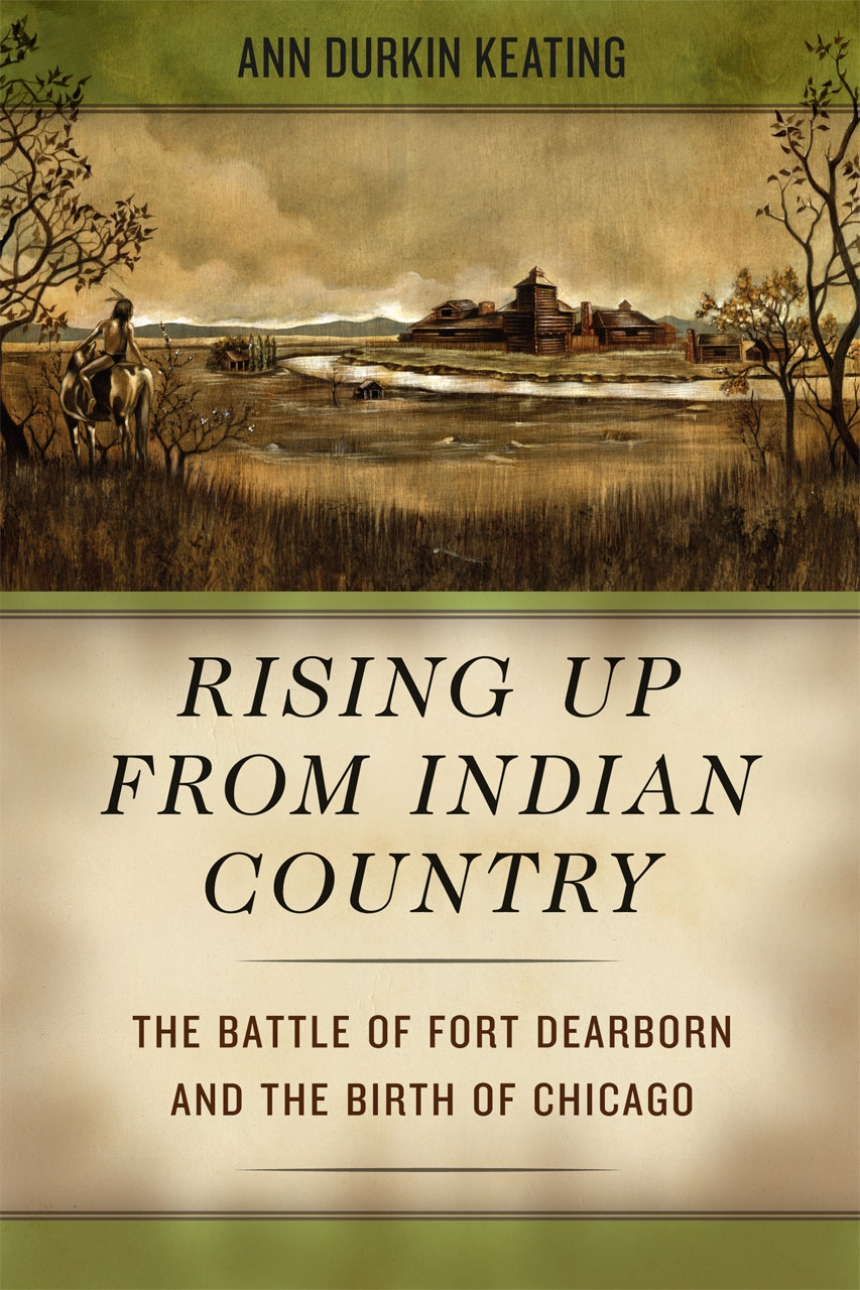Rising Up from Indian Country
The Battle of Fort Dearborn and the Birth of Chicago
9780226678580
9780226428963
9780226428987
Rising Up from Indian Country
The Battle of Fort Dearborn and the Birth of Chicago
In August 1812, under threat from the Potawatomi, Captain Nathan Heald began the evacuation of ninety-four people from the isolated outpost of Fort Dearborn to Fort Wayne. The group included several dozen soldiers, as well as nine women and eighteen children. After traveling only a mile and a half, they were attacked by five hundred Potawatomi warriors. In under an hour, fifty-two members of Heald’s party were killed, and the rest were taken prisoner; the Potawatomi then burned Fort Dearborn before returning to their villages.
These events are now seen as a foundational moment in Chicago’s storied past. With Rising up from Indian Country, noted historian Ann Durkin Keating richly recounts the Battle of Fort Dearborn while situating it within the context of several wider histories that span the nearly four decades between the 1795 Treaty of Greenville, in which Native Americans gave up a square mile at the mouth of the Chicago River, and the 1833 Treaty of Chicago, in which the American government and the Potawatomi exchanged five million acres of land west of the Mississippi River for a tract of the same size in northeast Illinois and southeast Wisconsin.
In the first book devoted entirely to this crucial period, Keating tells a story not only of military conquest but of the lives of people on all sides of the conflict. She highlights such figures as Jean Baptiste Point de Sable and John Kinzie and demonstrates that early Chicago was a place of cross-cultural reliance among the French, the Americans, and the Native Americans. Published to commemorate the bicentennial of the Battle of Fort Dearborn, this gripping account of the birth of Chicago will become required reading for anyone seeking to understand the city and its complex origins.
Reviews
Table of Contents
JOHN KINZIE TIMELINE
GENERAL TIMELINE
A MOBILE CAST OF CHARACTERS
LIST OF MAPS
PREFACE: JOHN KINZIE’S WORLD
ACKNOWLEDGMENTS
GENERAL TIMELINE
A MOBILE CAST OF CHARACTERS
LIST OF MAPS
PREFACE: JOHN KINZIE’S WORLD
ACKNOWLEDGMENTS
INTRODUCTION Chicago in the Indian Country of the Western Great Lakes
PART ONE THE UNITED STATES AND THE INDIAN COUNTRY OF THE WESTERN GREAT LAKES
ONE John Kinzie and the Traders in the Indian Country of the Western Great Lakes, 1763–1812
TWO The Greenville Treaty and the American Era, 1789–1800
PART TWO FORT DEARBORN AND TIPPECANOE, 1803–1811
THREE President Jefferson and the Founding of Fort Dearborn, 1803–1804
FOUR Kinzie & Forsyth, at Chicago and Peoria, 1803–1812
FIVE President Jefferson, Main Poc, and the Founding of Tippecanoe, 1808–1811
SIX Battle of Tippecanoe, November 1811
PART THREE IN THE WAKE OF THE BATTLE OF TIPPECANOE, SPRING 1812
SEVEN Planning for War, Spring 1812
EIGHT John Kinzie’s Ambiguous Loyalties and a Forgotten Murder, May–June 1812
NINE The War Begins, June–July 1812
TEN The Potawatomi Attack, August 15, 1812
PART FOUR IN THE AFTERMATH OF AUGUST 15, 1812
ELEVEN John and Eleanor Kinzie’s Neighbors, August 1812
TWELVE Captors and Captives, Fall 1812
THIRTEEN A Savage Fall: 1812 in the West
FOURTEEN 1813: Shifting Allegiances
PART FIVE AFTER THE WAR OF 1812
FIFTEEN The End of Indian Country in the Neighborhood of Chicago, 1816–1829
SIXTEEN Kinzie’s Retreat to Chicago, 1816–1828
SEVENTEEN The 1833 Treaty of Chicago
EPILOGUE Why It Was Not a Massacre
NOTES
INDEX
PART TWO FORT DEARBORN AND TIPPECANOE, 1803–1811
THREE President Jefferson and the Founding of Fort Dearborn, 1803–1804
FOUR Kinzie & Forsyth, at Chicago and Peoria, 1803–1812
FIVE President Jefferson, Main Poc, and the Founding of Tippecanoe, 1808–1811
SIX Battle of Tippecanoe, November 1811
PART THREE IN THE WAKE OF THE BATTLE OF TIPPECANOE, SPRING 1812
SEVEN Planning for War, Spring 1812
EIGHT John Kinzie’s Ambiguous Loyalties and a Forgotten Murder, May–June 1812
NINE The War Begins, June–July 1812
TEN The Potawatomi Attack, August 15, 1812
PART FOUR IN THE AFTERMATH OF AUGUST 15, 1812
ELEVEN John and Eleanor Kinzie’s Neighbors, August 1812
TWELVE Captors and Captives, Fall 1812
THIRTEEN A Savage Fall: 1812 in the West
FOURTEEN 1813: Shifting Allegiances
PART FIVE AFTER THE WAR OF 1812
FIFTEEN The End of Indian Country in the Neighborhood of Chicago, 1816–1829
SIXTEEN Kinzie’s Retreat to Chicago, 1816–1828
SEVENTEEN The 1833 Treaty of Chicago
EPILOGUE Why It Was Not a Massacre
NOTES
INDEX
